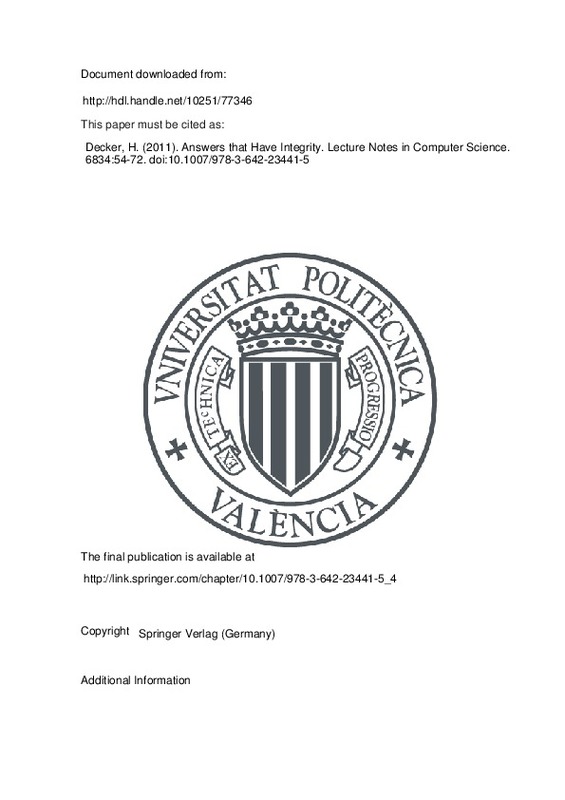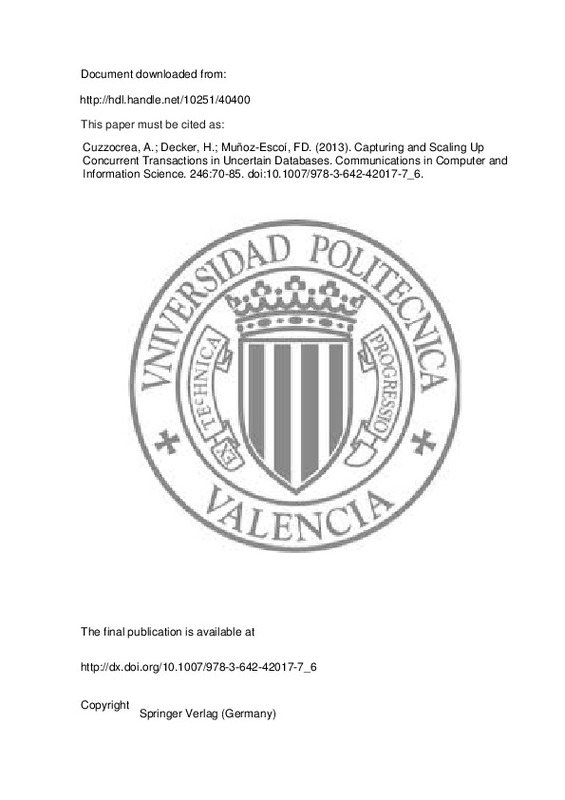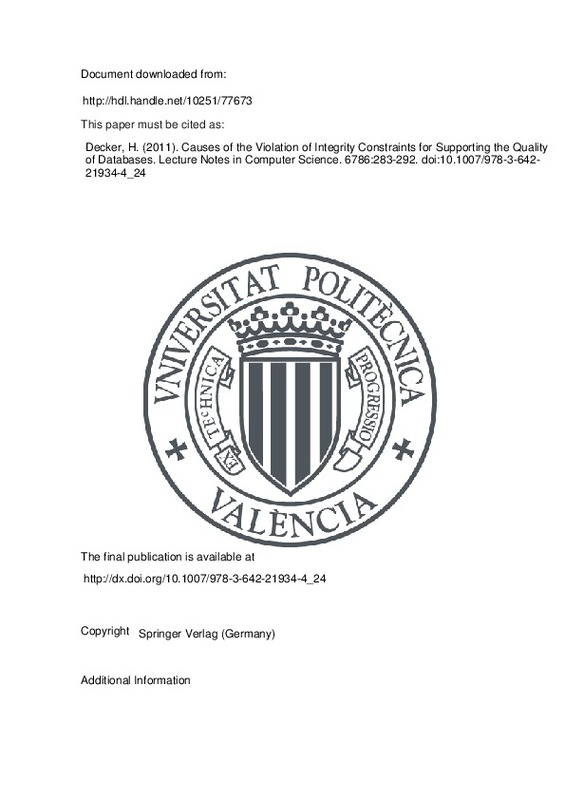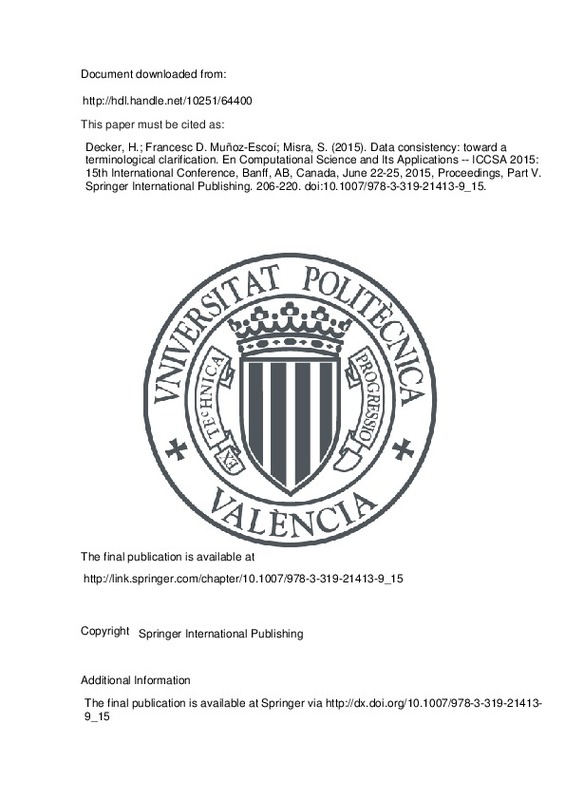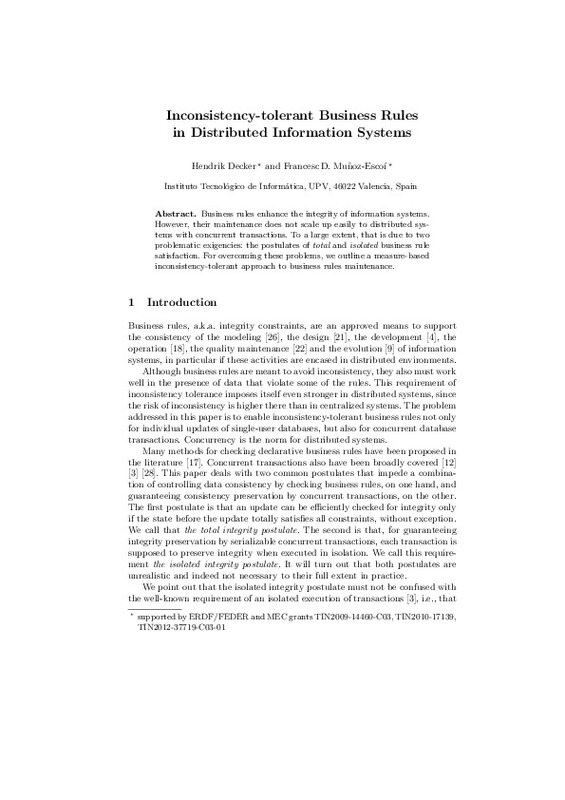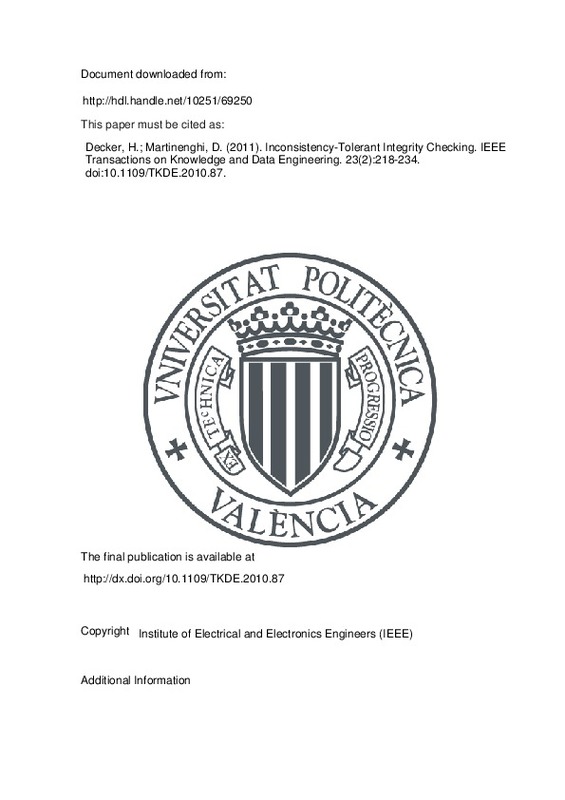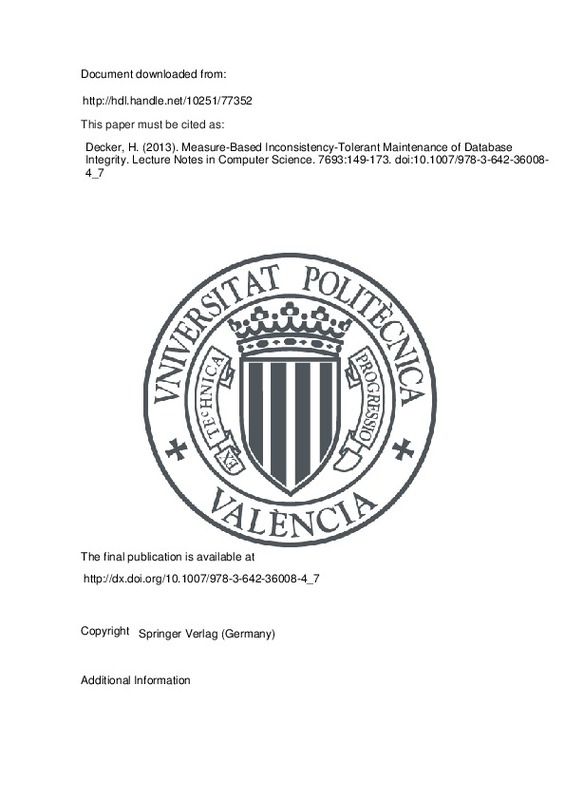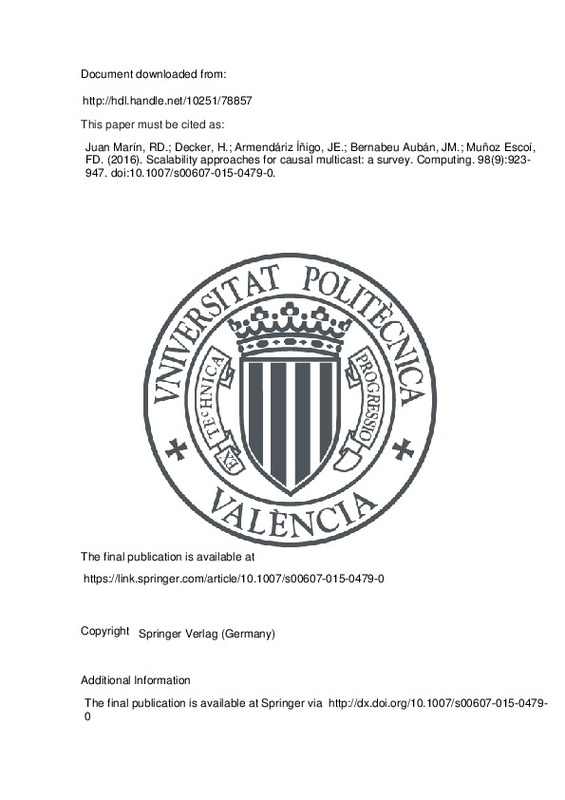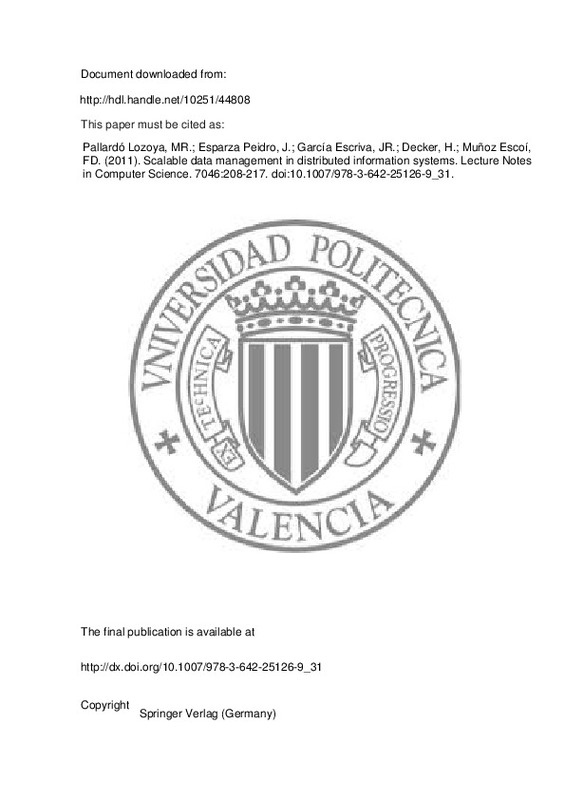

Listar por autor "Decker, Hendrik"
RiuNet: Repositorio Institucional de la Universidad Politécnica de Valencia
- RiuNet repositorio UPV
- :
- Listar por autor
JavaScript is disabled for your browser. Some features of this site may not work without it.
Buscar en RiuNet
Listar
Mi cuenta
Ayuda RiuNet
Admin. UPV
Listar por autor "Decker, Hendrik"
Mostrando ítems 1-16 de 16
-
Decker, Hendrik (Springer Verlag (Germany), 2013)[EN] Inconsistency in large database systems is commonplace and therefore must be controlled in order to not get out of hand. Consistency in database systems is encoded by integrity constraints. Inconsistency thus corresponds ...
-
Decker, Hendrik (Springer Verlag (Germany), 2011)[EN] Answers to queries in possibly inconsistent databases may not have integrity. We formalize ‘has integrity’ on the basis of a definition of ‘causes’. A cause of an answer is a minimal excerpt of the database that ...
-
Decker, Hendrik (Springer Verlag (Germany), 2013)[EN] The lack of quality of stored data is reflected by violations of integrity constraints. Answers to queries in databases containing bad quality information usually cannot be trusted. Nevertheless, many answers given ...
-
Cuzzocrea, Alfredo; Decker, Hendrik; Muñoz-Escoí, Francesc D. (Springer Verlag (Germany), 2013)[EN] This chapter provides a framework for capturing and scaling up concurrent transactions in uncertain databases. Models and methods proposed in the context of this framework for managing data uncertainty are innovative ...
-
Decker, Hendrik (Springer Verlag (Germany), 2011)[EN] The quality of the information provided by databases can be captured by integrity constraints. Thus, violated cases of constraints may serve as a basis for measuring the quality of given database states. A quality ...
-
Decker, Hendrik; Muñoz Escoí, Francisco Daniel; Misra, Sanjay (Springer International Publishing, 2015-06-19)Consistency is an inconsistency are ubiquitous term in data engineering. Its relevance to quality is obvious, since consistency is a commonplace dimension of data quality. However, connotations are vague or ambiguous. ...
-
DECKER, HENDRIK; Muñoz Escoí, Francisco Daniel (Springer Verlag (Germany), 2013)Business rules enhance the integrity of information systems. However, their maintenance does not scale up easily to distributed systems with concurrent transactions. To a large extent, that is due to two problematic ...
-
Decker, Hendrik; Martinenghi, D. (Institute of Electrical and Electronics Engineers (IEEE), 2011-02)All methods for efficient integrity checking require all integrity constraints to be totally satisfied, before any update is executed. However, a certain amount of inconsistency is the rule, rather than the exception in ...
-
Decker, Hendrik (Springer Verlag (Germany), 2011)[EN] A large diversity of different approaches to integrity checking has been proposed in the literature. We present a generic approach to integrity checking that is based on inconsistency metrics. It subsumes many known ...
-
DECKER ., HENDRIK (Springer Verlag (Germany), 2013)[EN] We argue that several kinds of desirable semantic properties of data provided by information systems, such as their quality, trustworthiness, certainty, security or lack of riskiness, can be modeled and maintained by ...
-
Cuzzocrea, Alfredo; Juan Marín, Rubén de; Decker, Hendrik; Muñoz Escoí, Francisco Daniel (Springer Verlag (Germany), 2012)Uncertainty and data integrity are closely related. The uncertainty of data can be modeled and maintained by existing database integrity technology. The usual requirement that integrity constraints must always be satisfied ...
-
Decker, Hendrik (Springer Verlag (Germany), 2013)[EN] To maintain integrity, constraint violations should be prevented or repaired. However, it may not be feasible to avoid inconsistency, or to repair all violations at once. Based on an abstract concept of violation ...
-
Decker, Hendrik (Springer Verlag (Germany), 2013)[EN] In practice, knowledge-based reasoning for decision making must be inconsistency-tolerant since, for decision making, contradictory data are unavoidable. We present a measure-based concept of inconsistency-tolerant ...
-
Decker, Hendrik (Springer Verlag (Germany), 2011)[EN] The consistency of databases can be supported by enforcing integrity constraints on the stored data. Constraints that are violated should be repaired by eliminating the causes of the violations. Traditionally, repairs ...
-
Juan Marín, Rubén de; Decker, Hendrik; Armendáriz Íñigo, José Enrique; Bernabeu Aubán, José Manuel; Muñoz Escoí, Francisco Daniel (Springer Verlag (Germany), 2016-09)Many distributed services need to be scalable: internet search, electronic commerce, e-government... In order to achieve scalability, high availability and fault tolerance, such applications rely on replicated components. ...
-
Pallardó Lozoya, María Remedios; Esparza Peidro, Javier; García Escriva, José Ramón; Decker, Hendrik; Muñoz Escoí, Francisco Daniel (Springer Verlag (Germany), 2011)[EN] In the era of cloud computing and huge information systems, distributed applications should manage dynamic workloads; i.e., the amount of client requests per time unit may vary frequently and servers should rapidly ...
Mostrando ítems 1-16 de 16

Universitat Politècnica de València. Unidad de Documentación Científica de la Biblioteca (+34) 96 387 70 85 · RiuNet@bib.upv.es



